Released in 1999, in-between Lost Highway and Mulholland Drive, The Straight Story was the only David Lynch film I hadn’t seen, and not because I just hadn’t got around to it. I’ve been actively avoiding it. I admit, this is for extremely vapid reasons. A G-rated Disney Lynch movie? How could that possibly work? A straightforward Lynch movie, with a linear plot? I was bound to hate it. So, I’ve avoided it for nearly twenty years, and whilst I can now see my objections as the flimsy unfounded protestations that they are, I’m kind of glad that I saved this one until last. It’s a great movie, in the classic sense of the term, and really cements my opinion of Lynch as a great director, rather than just a great artist who happens to dabble in moving pictures occasionally.

The screenplay for The Straight Story was written by John Roach and Mary Sweeney, Lynch’s long-time partner and editor. This, rather tellingly, is the only of Lynch’s feature films that he hasn’t also written or co-written, and while Lynch aficionados may well spot trademark touches, this is a remarkably restrained treatment of the script — the direction enhancing the script in many ways — with the movie being as much a testament to Lynch’s love of Americana as it is to the sensitive and touching scriptwriting.
The screenplay was nominated for an Independent Spirit Award, and Richard Farnsworth playing Alvin Straight received an Academy Award nomination for Best Actor. Roger Ebert wrote: “Like Hemingway’s dialogue, the screenplay by John Roach and Mary Sweeney finds poetry and truth in the exact choice of the right everyday words.”
The plot is relatively simple, 73-year-old World War II vet Alvin Straight’s estranged older brother Lyle has had a stroke, and Alvin decides to visit and try to make amends, but doesn’t have a driver’s license. He decides to make the 240-mile journey on his ride-on lawnmower. It is essentially the world’s slowest road movie.
The movie opens with a remarkably Twin Peaks-like melody from Angelo Badalamenti, who scored the entire movie, and a classic Lynch tracking intro shot, where you’re not sure if you’re looking at fields, or a carpet. The photography is bright and sunny, clearly an homage to the mid-western small-town countryside that Lynch grew up in and seems to love. The soundtrack develops its own identity though, moving away from that synth-laden lushness into something more fitting.
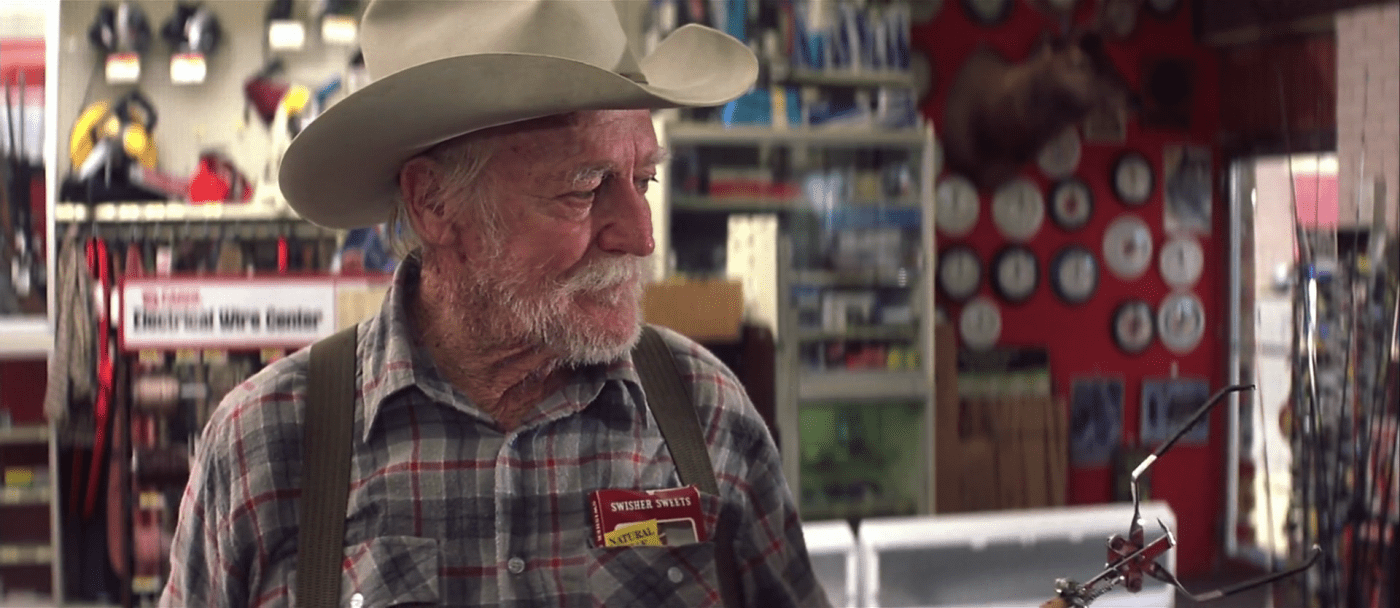
As with all Lynch, the movie doesn’t rush into exposition. It takes its time, showing the characters sitting in the sun, then panning slowly around the house. you hear, rather than see Alvin fall over, and when you do see him, it’s a very Lynch shot, Alvin lying on the floor, talking normally, akin to Cooper talking to the waiter in the Great Northern. It takes a while for Alvin to get on the road, with an interlude in a hardware store. A classic Lynchian scene that he takes his time with and obviously enjoys filming immensely.
“What d’you need that grabber for Alvin?”
“Grabbin’”
This is in many ways a movie that lives between the plot; again, something Lynch enjoys. There is a very simple sweet story on the surface here, an ode to ageing, of taking one’s time, enjoying the journey, of offering kindness to others. The movie, like many road movies, is a series of encounters, of conversations. Through these encounters and conversations, we peel back the layers of Alvin’s life — his sorrows, guilt, and remorse. Each person he meets reflects a period of his life or an event. In a conversation with another war veteran, he reveals that while acting as a sniper he accidentally shot and killed a friendly scout. It’s left unspoken but this guilt is probably what led him to descend into alcoholism.
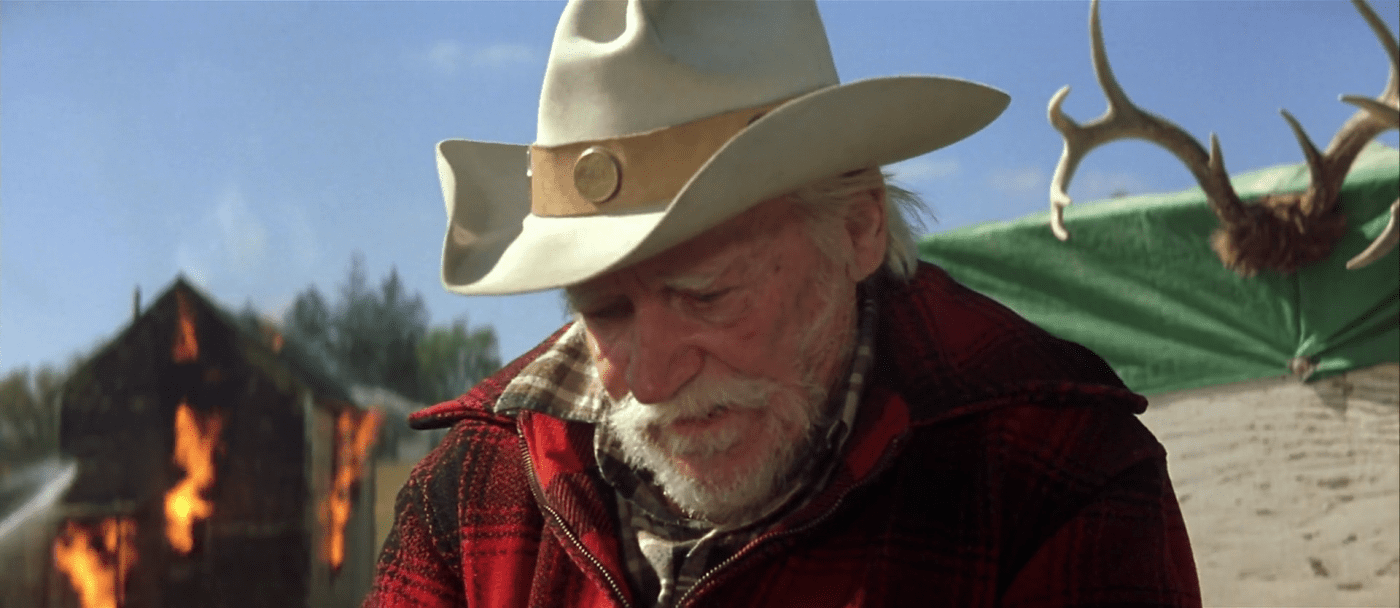
One of the most revealing scenes in The Straight Story is when Alvin’s brakes stop working driving down a hill leading to a burning house. As he hurtles down the hill, Alvin seems more focused on the burning house than his impending doom. In a conversation with a young pregnant runaway earlier in the movie, Alvin revealed that his grandchildren were taken away from their mother, his daughter Rose, because ‘someone else’ was watching them when a fire broke out. Rose has an undisclosed learning difficulty, thus the state blaming her. It is clear from Alvin’s reaction to the burning house that he was the one responsible for the fire, and for Rose’s children being taken away, and was probably drunk at the time, much as his mean drunkenness led to the estrangement between the brothers. His journey to visit his brother is therefore in many ways an act of contrition, as he realises how close he is to the end of his life, how important family is, and admits the mistakes he has made.
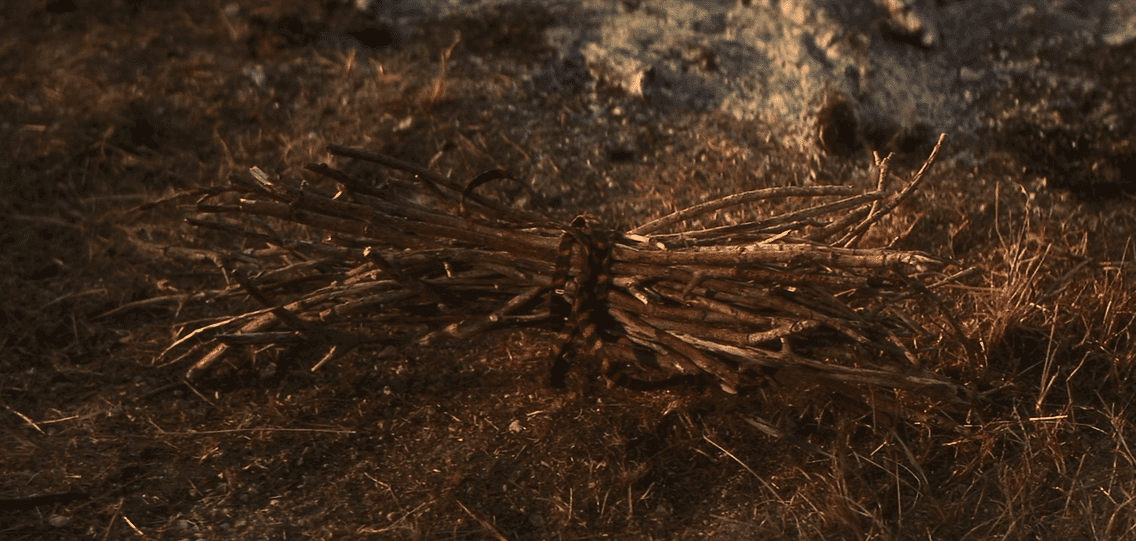
A recurrent theme in the movie is the importance of family, and the bonds of brotherhood, both familial and the darker but similarly strong ties that come from living through the trauma of war. It achieves all this in a slow, unfussy manner, which somehow makes the pain and sorrow lurking behind the gliding shots of beautiful mid-western sunsets that much more impactful.
Lynch has been investigating the darkness behind normal lives for a long time, but in many ways, the darker more surreal nature of movies like Blue Velvet or Lost Highway lessen the impact of the emotions you feel. You are hypnotised by them, but it doesn’t feel quite real. The Straight Story is about real people, with real traumas and the deft touch Lynch uses in delivering the message really does amplify the emotion.
Whilst other works in Lynch’s oeuvre could lay claim to being more surreal, more gripping, or more unique, his directorial skill is far more openly apparent in this simpler, more emotional tale. There is no complex non-linear dreamscape to hide behind here. It’s all laid bare, delivered with a light touch and it just works really well.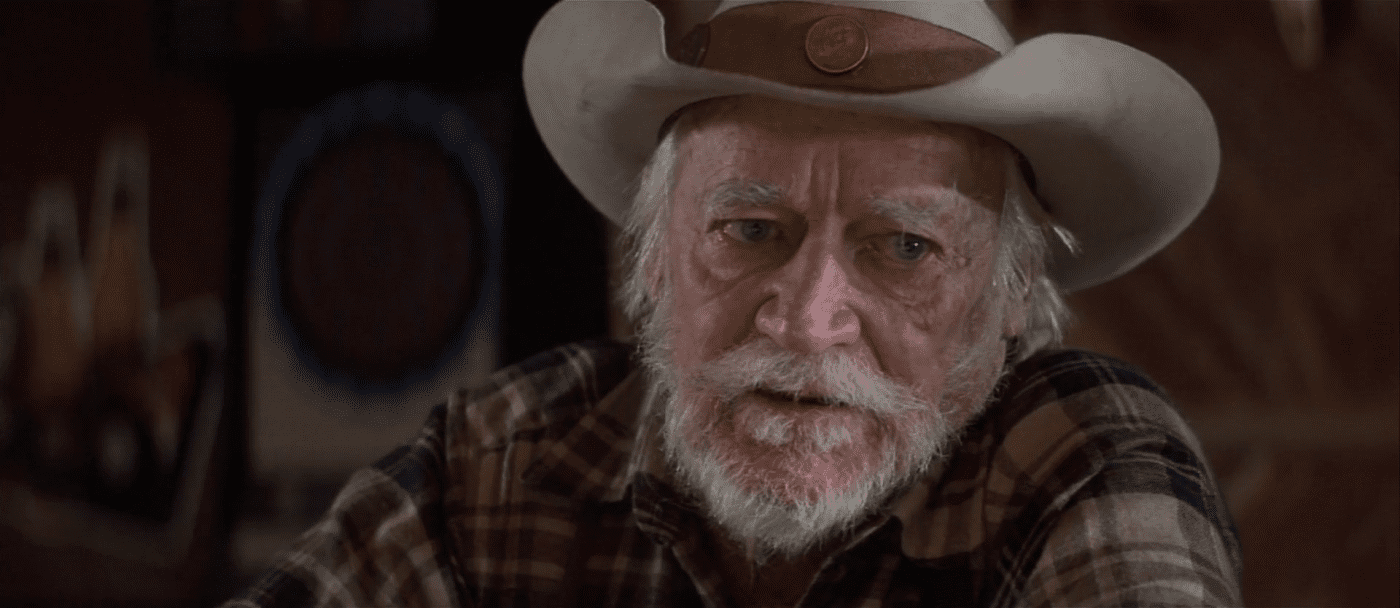

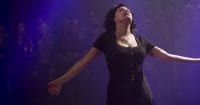
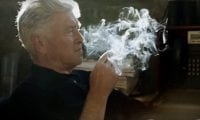

I agree; great movie!
Un film vrai
Love the movie. I’m from the mid-west and can relate. Can anyone tell me if the runaway girl was actress Tricia Cast? I cannot find any credits for her.
It was Anastasia Webb, playing Crystal.